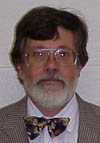 by Jeffrey Kovac
by Jeffrey Kovac
Largely overlooked and unmentioned in the discussion of America’s military entanglements in Iraq and Afghanistan is the story of some 12,000 conscientious objectors who refused to fight in World War II and instead performed free labor in Civilian Public Service camps across the United States.
 Motivated primarily by their religious beliefs, these men at 152 camps, including eight sites in Oregon, worked in areas such as soil conservation, forestry, firefighting, agriculture, social services and mental and public health. Some served as subjects in a variety of medical experiments.
Motivated primarily by their religious beliefs, these men at 152 camps, including eight sites in Oregon, worked in areas such as soil conservation, forestry, firefighting, agriculture, social services and mental and public health. Some served as subjects in a variety of medical experiments.
The Civilian Public Service program operated from 1941 to 1947 and provided a unique structure for COs to do “work of national importance under civilian direction†as an alternative to military service. You might find a conservative Mennonite from the Midwest bunking next to a Harvard Ph.D. Collectively, however, these men stood fast to their pacifist principles even in the face of widespread criticism.
A Difficult Compromise
During a Popular War
CPS was an uneasy compromise between conscientious objectors and the government during a popular war. As a country built on the principles of religious and personal freedom, the United States has always been a haven for dissenters, including those opposed to war for religious, moral or political reasons. Yet, during times of war, there is a natural tendency to close ranks behind the military, to support the troops.
The emergence of the CPS program as a partnership between the federal government and historic peace churches that ran many of the camps seems all the more remarkable, given the spectrum of alternatives that COs have faced during past wars, ranging from jail time to draft dodging. Uncle Sam accepted that these men had a moral objection to military service but at the same time let it be known they still had a duty to serve their country. One of the most notable CPS camps was right here in Oregon in the Columbia Gorge. On Dec. 5, 1941, two days before Pearl Harbor, 71 conscientious objectors — nearly all from California — arrived by train at CPS Camp #21 at Cascade Locks. They began their alternative service, expecting to serve for a year.
After the U.S. entered the war, their term of service became the duration of the war plus six months, the same as those in the military. Eventually, the camp, which was actually seven miles east in Wyeth, housed nearly 200 men, who, despite long hours of physical labor on work projects for the Forest Service, were able to build a vibrant pacifist community that came to be known as the “Athens of CPS.†About 550 men spent some time at Cascade Locks during the war.
Under the leadership of camp director the Rev. Mark Y. Schrock, a young Church of the Brethren minister from Indiana, the COs developed a strong educational program that included a systematic attempt to create a philosophy and strategy for building a postwar pacifist world, a project called the School of Pacifist Living. They also nurtured the arts through concerts, plays and the publication of a literary magazine, The Illiterati.
Remarkable Moral Courage
As World War II progressed, some combatants employed tactics that were morally questionable, yet few civilians in the United States objected. The men of CPS #21, however, showed remarkable moral courage both in withstanding enormous pressure to join the military, and then taking strong public stands against the more extreme tactics used during the war.
The removal and incarceration of persons of Japanese ancestry, both citizens and non-citizens, along the West Coast, provoked a protest among the men at Cascade Locks. Specifically, they objected to the attempt by the War Relocation Authority to remove George Kyoshi Yamada, a California college student and Japanese American CO, and send him to an incarceration camp.
Schrock wrote letters to his superiors on the church’s Brethren Service Committee and to the U.S. Selective Service, stating that he would not sign Yamada’s discharge papers because in doing so he would be “participating in what fair minded men of today and all future ages must see as a crime and an insane inhumanity to man.â€
The COs wrote their own letter, signed by Camp President Charles Davis, himself a recent college graduate who later served twice as Oregon’s public utility commissioner, in which they expressed their willingness to engage in nonviolent direct action to prevent Yamada’s removal from camp. The War Relocation Authority ultimately reconsidered and allowed Yamada to remain in CPS, although it reassigned him to an inland camp at Colorado Springs, Colo.
In publishing a literary magazine, the COs directly raised the question of the importance of art for pacifism. Their answer was that it was important for the pacifist to “present his philosophy to the haunters of libraries, concerts and galleries.”
William Stafford and The Illiterati
Mainly a poetry magazine, The Illiterati included the early work of William Stafford, who would later become Oregon’s poet laureate. The Illiterati and the other artistic efforts were attempts by those with creative impulses to make sense of both the war and their own situation in CPS.
The destruction of Hiroshima and Nagasaki, Japan by atomic bombs outraged the men at Cascade Locks, who immediately formed a group to study the issue of atrocity bombing and began to send telegrams and letters to pacifist leaders around the country. The bombings effectively ended the war, but many COs continued their efforts and became anti-nuclear activists during the 1950s.
The story of CPS #21 shows that even in a time of war it is possible to follow the dictates of conscience and take a positive stand for peace. Regarded as unpatriotic cowards by the public, the COs served their country, even as they continually looked for ways to make the world a better place by objecting to actions and policies that they felt were immoral. Φ
Jeffrey Kovac, a graduate of Sunset High School and Reed College (’70) , is a professor of chemistry at the University of Tennessee, Knoxville, and the author of Refusing War, Affirming Peace: A History of Civilian Public Service Camp #21 at Cascade Locks (Oregon State University Press, $21.95 paperback, 192 pages). This article appeared in The Oregonian on Oct. 11, 2009.
Photo: govschool.utk.edu/faculty/images/kovac.jpg


1 comment for “WWII Pacifists Served in Oregon”